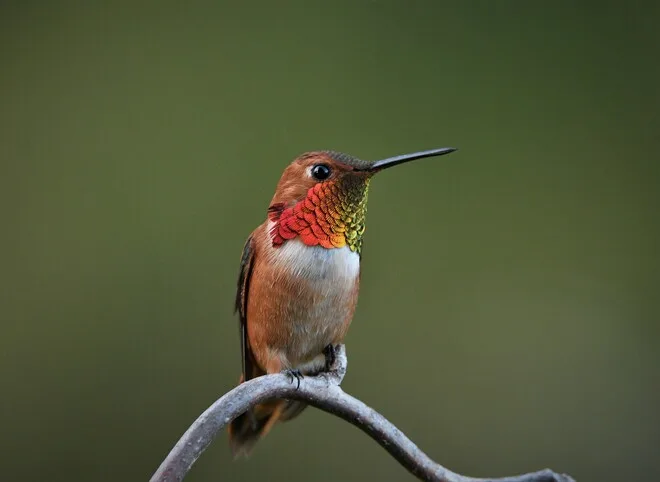
Scientists figure out why hummingbirds hum
Here's the science behind the hummingbird hum.
The name 'hummingbird' is a nod to the sound the birds make while hovering around flowers to feed. And now, scientists have a clearer picture of how they do it.
In a new paper, researchers from Eindhoven University of Technology, a company called Sorama, and Stanford University observed hummingbirds using a dozen high-speed cameras, half a dozen pressure plates, and 2,176 cameras to measure the origin of the sound.
It appears to be the result of aerodynamic forces and pressure changes produced by the wings as they move.
"These pressure differences over the wing are essential, because they furnish the net aerodynamic force that enables the hummingbird bird to liftoff and hover," the study's authors said in a statement.
"Unlike other species of birds, a hummingbird wing generates a strong upward aerodynamic force during both the downward and upward wing stroke, so twice per wingbeat. Whereas both pressure differences due to the lift and drag force acting on the wing contribute, it turns out that the upward lifting pressure difference is the primary source of the hum."

File photo uploaded to The Weather Network by Toonie Irvine.
Professor David Lentink of Stanford University, an author of the study, said this explains why winged creatures make different noises.
"Mosquitoes whine, bees buzz, hummingbirds hum, and larger birds 'woosh'. Most birds are relatively quiet because they generate most of the lift only once during the wingbeat at the downstroke ," Lentink said.
"Hummingbirds and insects are noisier because they do so twice per wingbeat."
QUIETER TECHNOLOGY
While researchers didn't set out to improve existing technologies, the authors say the findings could be used to make aircraft and drones, along with the fans inside laptops and vacuum cleaners, quieter.
"We make sound visible in order to make appliances quieter. Noise pollution is becoming an ever-greater problem. And a decibel meter alone is not going to solve that," Rick Scholte of Sorama said.
"You need to know where the sound comes from and how it is produced, in order to be able to eliminate it. That's what our sound cameras are for. This hummingbird wing research gives us a completely new and very accurate model as a starting point, so we can do our work even better."











